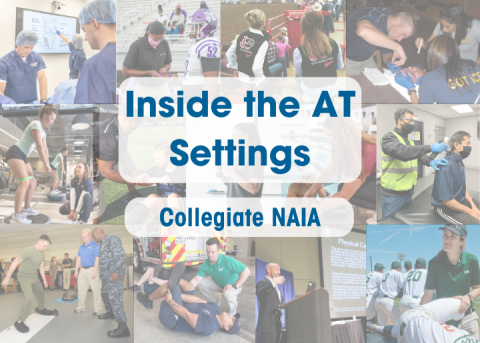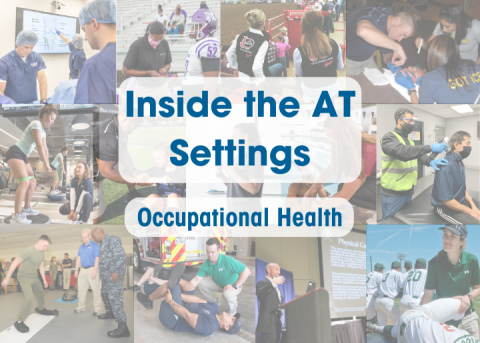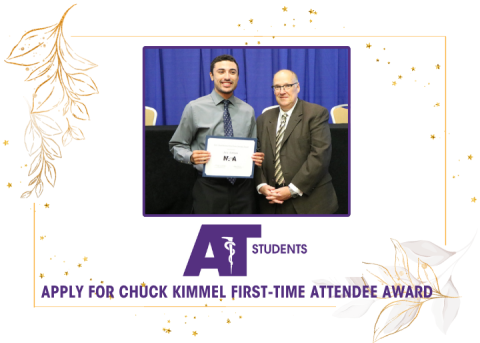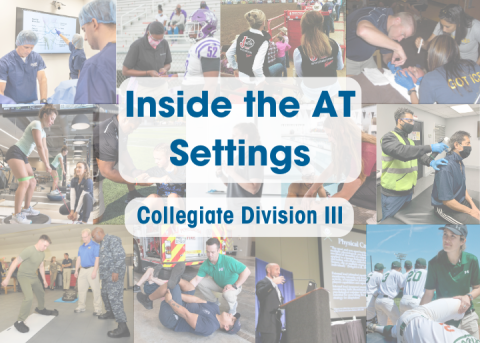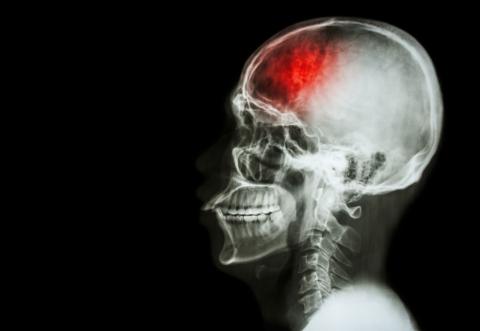
By Casey Christy, MA, ATC, CSCS, and Dale Grooms, ATC
During an intense soccer game, one of your players collides with an opposing defender following a corner kick. She crouches down by the soccer goal with her arms tightly embraced around her head. As you attend to the player, she tells you she is dizzy with blurred vision, and she has trouble focusing on your questions. Your on-field evaluation is only the beginning of a detailed injury management process, and with the ever-growing concerns over concussions, proper communication and documentation for the secondary school athletic trainer are more important than ever.
According to the NATA Position Statement: Management of Sport Concussion, “the athletic trainer should ensure proper documentation of the concussion evaluation, management, treatment, return to participation progression, and physician communications.” From a legal perspective, athletic trainers have a clear duty of care, and we are held to standards of care outlined in the NATA position statement and other current literature. The following are tips to help ensure athlete safety and concussion management success, while protecting the athletic trainer and the school from liability.
Initial Concussion Evaluation: “For successful concussion treatment and return to play, you must have a comprehensive management plan, which includes the athletic trainer, school personnel, doctors, coaches and parents,” said Dan Newman, head athletic trainer at Union High School in Tulsa, Oklahoma, and the District Five representative on the NATA Secondary School Athletic Trainers’ Committee. “That also includes an evaluation tool which evaluates cognitive and physical symptoms, a return to learn plan, and return to play criteria."
Many athletic trainers use the SCAT3 evaluation tool or a similar method to document the initial concussion evaluation. Be sure to utilize a concussion evaluation procedure consistent with the latest literature and best practices. For example, the NATA concussion position statement outlines injury evaluation components, which should include the injury mechanism, initial signs and symptoms, state of consciousness, and physical and neurologic examination findings. The statement goes on to recommend documentation of patient and parent instructions given, physician recommendations, return to play progression specifics, and any relevant history and recovery notes. In addition, make certain to document your follow-up evaluations, conversations and recommendations as much as practical.
Concussion Communication: When a concussion occurs, notify the parent, coach and school nurse, and document your communication. The school nurse can be a significant asset in the care of these injures, and plays a key role in enforcing academic modifications. Some athletic trainers prefer to communicate via email so there is an electronic record. Inform all involved that the concussed athlete is not to participate in sports or physical education classes until appropriately cleared by either you or the physician, in accordance with your school policy and state law if indicated. This way an athlete can’t “accidentally” participate before appropriate clearance. Sometimes athletes fail to follow-up with the athletic trainer, or do not complete their return to play procedure by the season’s end, and attempt to go out for another sport the following season. Work with your athletic director to develop an eligibility system that will “flag” these unresolved cases when a new season begins.
Return to Learn: In conjunction with the school nurse, guidance counselors and school administration, develop a protocol for teacher notification and academic restrictions. A policy outlining who can authorize and terminate academic restrictions, and how extended accommodations are handled will help avoid any confusion or conflicts. To facilitate clear communication, consistent terminology is emphasized in the American Academy of Pediatrics Returning to Learning Following a Concussion Clinical Report. According to the report, “academic restrictions” refer to non-formal adjustments made during the initial 1-3 week recovery period, while “academic accommodations “ refer to longer-term needs beyond 3 weeks. The report also suggests a multi-disciplinary team approach is best, including family members, the physician, school nurse, teachers and athletic trainer.
Stacey Ritter, Director of Sports Medicine and Athletic Training for San Luis Sports Therapy and Movement for Life, finds it helpful to provide teachers, early in the school year, with an overview of how concussions affect academics.
“The athletic trainer can provide support materials via email, or in school mailboxes, with the athletic trainer’s contact information included,” she said.
Ritter, who supervises an outreach program for 11 California high schools, and has served as the District 8 representative to the NATA SSATC, suggests another proactive step: “If the athletic trainer can do a brief presentation during a departmental meeting or teacher in-service, it can help teachers feel more comfortable in assisting concussed students.”
Concussion Home Care: Create a handout to send home with athletes and parents following a concussion. Include signs, symptoms and other red flags indicating when an emergency room or immediate physician evaluation is needed. You can also provide information about second impact syndrome, cognitive rest recommendations, and other important post-injury instructions. The more education you communicate to the athlete and parent, the better. Document that you provided this information.
Physician Evaluation Form: Develop a physician concussion evaluation form that allows you to indicate the signs and symptoms found upon your initial evaluation and any prior concussion history. Include your concussion policy on the form for the physician to review, so the doctor is fully informed of your procedures, and provide an area for the physician to indicate return to play recommendations. Develop a plan with your school physician and administration to handle physician clearance notes inconsistent with your policy.
Return to Play Documentation: Inadequate documentation of the return to play process can significantly expose the athletic trainer to liability. Create a form or use other electronic means to date and document specifics of each step of the return to play procedure as part of the athlete’s record. Include areas to indicate if any signs or symptoms re-occurred, results of neurocognitive testing if used, and other notes that may be specific to your protocol. Document your communication with the treating physician and the parents if the athlete suffers from continued or worsening symptoms, if you refer the athlete back to their physician, or any other physician communication. You may also want to discuss whether your school or supervisory physician should be notified of all sports-related concussions at your school that are under your care.
Confirming Symptom Free: In addition to your repeat evaluations and neurocognitive testing (if available), involve the parents when determining when an athlete is symptom-free. Speak with a parent as an extra step to make certain all agree the athlete is asymptomatic, and document. You can also provide a letter home reviewing the concussion signs and symptoms, asking the parent to date and sign this asymptomatic agreement. Some protocols and state laws may require a return visit to a physician to determine the athlete is asymptomatic.
In summary, concussion care involves many individuals and a thorough management procedure. In the best interests of the athlete, the school, and the athletic trainer, develop a protocol that’s proactive, informs all necessary individuals, and involves documenting your care.
Casey Christy, MA, ATC, CSCS, is the head athletic trainer at Eastern High School in Voorhees, New Jersey, and is the former District Two NATA Secondary School Athletic Trainers’ Committee representative. Dale Grooms, ATC, is the head athletic trainer at New Trier High School in Winnetka, Illinois, and serves as the District Four NATA SSATC representative.
References
Returning to Learning Following a Concussion. Mark E. Halstead, Karen McAvoy, Cynthia D. Devore, Rebecca Carl, Michael Lee, Kelsey Logan and Council on Sports Medicine and Fitness, and Council on School Health Pediatrics; originally published online October 27, 2013; DOI: 10.1542/peds.2013-2867
Broglio et al. National Athletic Trainers Association Position Statement: Management of Sport Concussion. Journal of Athletic Training 2014;49(2):245–265


